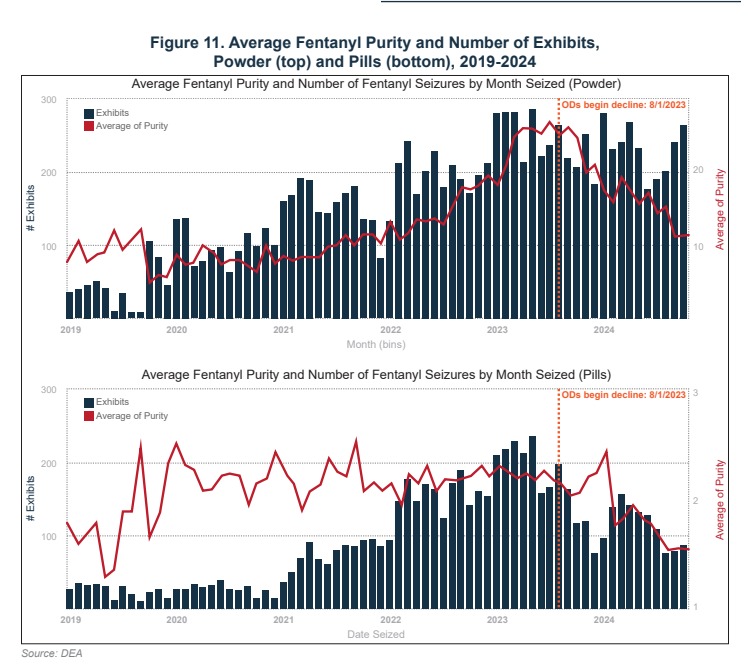Once a month, the CDC releases their provisional fatal overdose data based on a 12-month rolling average. The CDC’s data is 4 months behind. Lately, each month the release of the data has led to glowing articles about overdoses going down, which they had been for some time — quite substantially. That was until this month’s release. More on that in a moment.
Earlier this month on a Monday, Connecticut Governor Ned Lamont and his two health commissioners held a press conference celebrating a 26% reduction in overdoses in 2024. While emphasising that the epidemic was still a serious problem, he was quoted saying the numbers are going in the right direction. I don’t know how long in advance they had planned the conference, but two days earlier the health department helped circulate a Friday advisory issued by the federal High Intensity Drug Trafficking Agency’s Overdose Response Strategy that warned of increasing strength in the fentanyl supply that likely was behind a three week long overdose spike in two of the state’s major cities and along the I-95/I-91 interstate corridor.
Those who have been following what is going on in the street know that overdoses have been increasing steadily in Connecticut in 2025 after the severe downswing of 2024 (particularly in the last six months of year) that many attributed to a decline in the potency of the fentanyl supply.
Here’s a graph from the DEA’s 2025 National Drug Assessment that helps explain the 2024 decline. The fentanyl potency goes down, the deaths drop. Fentanyl potency starts to increase, well, guess what?

This week, the CDC released overdose data through January of 2025, and for the first time in many months, overdoses are up.
In an NPR article, one commentator worries that the decline is over and that it was a “one-time event,” while another commentator speculates this increase it is just a blip.
Here in Connecticut, in addition to being a street paramedic (admittedly working less shifts than I used to), working in an ED, and helping manage the state’s EMS opioid reporting initiative, I can tell you, EMS reported overdoses have increased each month on a per-day average since last December, with June having the largest increase. I have access to a program called ODMAP where EMS overdoses are automatically recorded each hour. About quarter to twenty minutes after the hour, I refresh my browser, the number for the day goes up. Since I last checked three hours ago, there have been nine more overdoses reported in the state, including two fatal.
I expect there may be small increases in the next few months in the CDC’s lagging overdose data, but then I expect the rate to rise more significantly. The problem with 12-month data is if you have 12 months of decline, and then the overdoses start going back up, it will be many months before that rise is seen as clearly as opposed to if the study period was only 4 months. 2024 overdoses are steadily downhill, 2025 are heading up, maybe not as sharply as they went down in 2024, but the trend is unmistakable.
I hope I am wrong. I hope this “blip” is just a short bounce up, not a long-term trend. I don’t think it will get as bad as it was three years ago — there is too much naloxone on the street now, and too much good work has been done — but anyone who thinks opioid overdoses are no longer a problem is in for a rude awakening. The newer numbers are not looking good nor is the news from the street.

